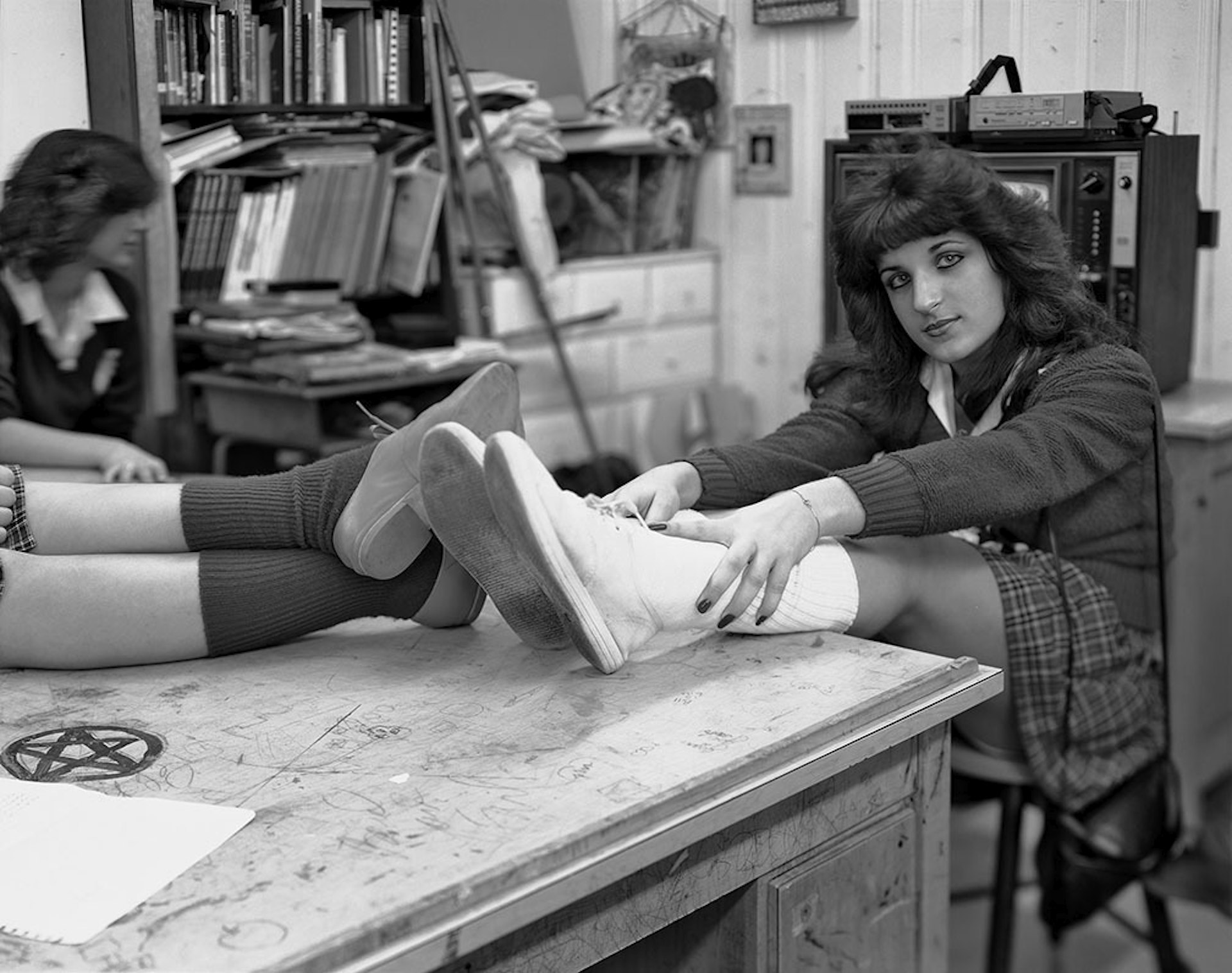When Alec Gill was growing up in post-war Hull during the 1950s, he used to be picked on by others at school. Shorter in height than most of his peers, they thought he would be an easy target, until he wasn’t. “I’m small – I don’t know if I’m even 5ft 2in,” he says. “When you’re at school you’re attractive to bullies, but the thing was I used to stand up to the bullies and fight back, which for some reason they didn’t like.”
Those experiences left Gill with a chip on his shoulder, which stayed with him through his adult life. After taking up photography in his 20s, it led him to strike up a particular friendship with a community of deep-sea fishermen living along Hessle Road on the west side of the city. His father had worked as a fisherman and he found he had common ground with the characters of the people who lived there.

“I had an affinity because the Hessle Roaders were the underdogs in the trawling industry,” he says. “Because you can’t argue with mother nature. If you’re in the middle of a storm at sea off Iceland or Greenland, you almost always come out second best – there was a high loss of life. But also, people would look down upon fishing families – you had the image of drunken brawling fishermen, which was totally untrue.”
Throughout the next 18 years, Gill would make the short cycle down to Hessle Road, where using a Rolleicord medium format camera, he would take pictures of its Victorian terraced streets, neighbourhood stores, but most of all: its vibrant local community and often misunderstood people.


Now, an extensive collection of photographs from his archive, documenting his hundreds of days out making pictures along the single road, are being published in his extensive new photobook The Alec Gill Hessle Road photo archive. Beginning in 1971 and continuing through until 1987, the monograph documents an ever-evolving community living on the road and decline of the deep-sea fishing industry over nearly two decades.
There’s a warmth running through the black-and-white pictures, whether people are captured in laughter at one of the area’s 37 pubs, or children playing joyously in the streets. Much of which comes from the spirit of the area, Gill explains: “If you lose somebody at sea, then there’s no body, then no funeral, and no headstone – so psychologically, Hessle Roaders had never been able to grieve properly.”
When Gill first started making the pictures in the early 1970s, fishing was statistically 50 times more dangerous than other jobs. “Being away at sea, they’re only home for three days [at a time], so we called them three-day millionaires,” he continues. “It was a very demanding lifestyle, and because they lived so close to death, they were living every day as if it was their last – they were lovely people.”


Throughout the years, the British trawling industry in the northern Atlantic Ocean faced increased pressures, which eventually took their toll. Disputes over the waters fishermen were allowed to operate resulted in the Cod Wars with Iceland, and work became harder to come by. “Britain lost three Cod Wars against Iceland – their fishing limits were extended from three miles, to 50 miles, and then eventually 200 miles, so the industry is lost now.”
Hessle Road, and the community that had been there at the start of the 1970s suffered as a result, and by the end of the next decade, the area became earmarked for a local regeneration programme. Much of what Gill captured was knocked down soon after, and only survive through his photographs. “The council wanted to demolish a lot of the houses, the community was still there and thriving, but once the fishing trawlers had stopped going to sea, it was like [what happened] with coal mining when the coal mines closed,” he says. “I recorded the decline of a community that did really have a community spirit.”
The Alec Gill Hessle Road photo archive is available to purchase via the book’s official website
Enjoyed this article? Follow Huck on Instagram.
Support stories like this by becoming a member of Club Huck.
Latest on Huck

Nearly a century ago, denim launched a US fashion revolution
The fabric that built America — From its roots as rugged workwear, the material became a society-wide phenomenon in the 20th century, even democratising womenswear. A new photobook revisits its impact.
Written by: Miss Rosen

A forlorn portrait of a Maine fishing village forced to modernise
Sealskin — Jeff Dworsky’s debut monograph ties his own life on Deer Isle and elegiac family story with ancient Celtic folklore.
Written by: Miss Rosen

Subversive shots of Catholic schoolgirls in ‘80s New York
Catholic Girl — When revisiting her alma mater, Andrea Modica noticed schoolgirls finding forms of self-expression beyond the dress code. Her new photobook documents their intricate styles.
Written by: Isaac Muk

We need to talk about super gonorrhoea
Test & vaccinate — With infection rates of ‘the clap’ seemingly on the up, as well as a concerning handful of antibiotic resistant cases, Nick Levine examines what can be done to stem the STI’s rise.
Written by: Nick Levine

5 decades ago, Larry Sultan & Mike Mandel redefined photography
Evidence — Between 1975 and 1977, the two photographers sifted through thousands of images held by official institutions, condensing them into a game-changing sequence.
Written by: Miss Rosen

Warm portraits of English football fans before the Premier League
Going to the Match — In the 1991/1992 season, photographer Richard Davis set out to understand how the sport’s supporters were changing, inadvertently capturing the end of an era.
Written by: Isaac Muk







